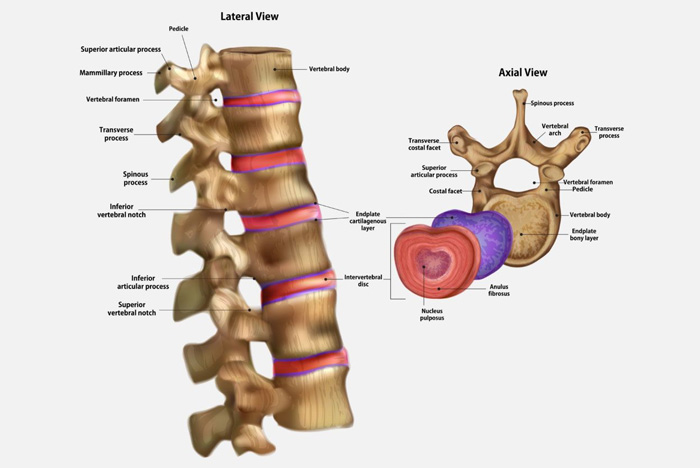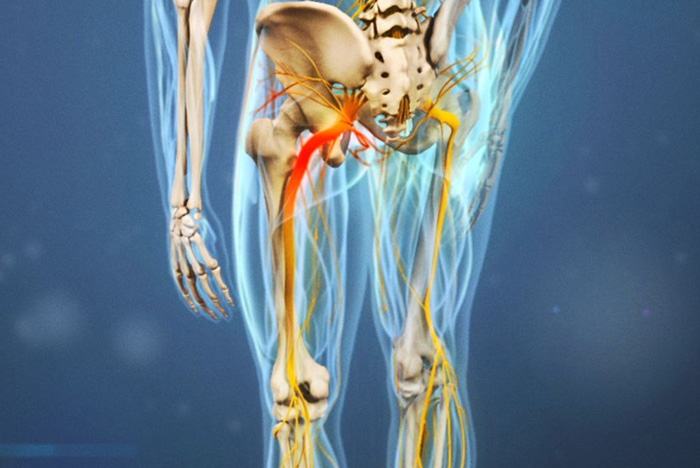The Causes Low Back Pain
Understanding the root cause can help doctors properly treat your pain

Back pain is often a disorder of complex origins and symptoms.
It is an indiscriminate enemy. Back pain may start following muscle strain, ligament strain, fracture, slipped disc or may be due to degenerative arthritis of the spine and the joints. Sometimes, pain may be because of the scar tissue developed in the spinal canal after surgery. It is important to understand the back and spine as the back is working 24 hours a day, every day of the year. Every time you lift, sit, stand, or even lie down, you are using your back. Understanding why your back hurts can help doctors identify proper treatments to alleviate your pain.
It is an indiscriminate enemy. Back pain may start following muscle strain, ligament strain, fracture, slipped disc or may be due to degenerative arthritis of the spine and the joints. Sometimes, pain may be because of the scar tissue developed in the spinal canal after surgery. It is important to understand the back and spine as the back is working 24 hours a day, every day of the year. Every time you lift, sit, stand, or even lie down, you are using your back. Understanding why your back hurts can help doctors identify proper treatments to alleviate your pain.
FACET JOINT ARTHRITIS
Patients with lumbar facet arthritis complain of pain in the low back, hip, and thigh area. The pain is aggravated by bending backwards. One may also have tender muscles over the lumbar facet joints. Even though it is not common knowledge, pain from facet joints, with or without arthritis, is the most common cause of back, hip, and leg pain.SOFT TISSUE BACK PAIN
Back pain may be from soft tissues of the lower back including the muscles and ligaments, caused by sprain or strain. It is considered by some as the most common variety. However, contrary to popular belief, it is seen in only a small number of patients.

RUPTURED OR HERNIATED DISC
The structure of the disc is like a jelly doughnut with tough surrounding ligaments. The nucleus can rupture and break through the surrounding ligament, with or without trauma, and pinch a nerve. In most cases a ruptured disc causes pain that follows the nerve down the leg into the foot and may be associated with tingling, numbness, or weakness in the extremity.SPONDYLOLISTHESIS
Spondylolisthesis is a condition that occurs when all or part of one vertebra has slipped onto another vertebra. This most often occurs in the lower back and can cause a person to experience low back pain that might spread into the back part of the thigh or lower leg. You are likely to find that the pain improves by bending backwards or straightening of the spine and is made worse by bending forward at the waist. SPONDYLOLYSIS
Spondylolysis is a defect of a vertebra. The great majority of cases occur in the lowest of the lumbar vertebrae, but spondylolysis may also occur in the other lumbar vertebrae, as well as in the thoracic vertebrae. When spondylolysis is present in the spine, it means that the posterior part of the vertebra is detached and there is a separation of the joints. It is typically caused by stress fracture of the bone, and is especially common in adolescents who overtrain in sports activities.SPINAL STENOSIS
Narrowing of the spinal column around the spinal cord or nerve roots is called spinal stenosis. Spinal stenosis usually occurs with degenerative arthritis. This can lead to compression of the nerve roots which then causes pain and irritation. Patients may notice that these symptoms occur after walking a short distance. Resting may help to relieve the symptoms. Usually leaning forward or flexing the spine helps relieve irritation of the involved nerve roots. Sitting for a time may also help to relieve the pain.OSTEOPOROSIS
Osteoporosis means a porous bone. A fall, a blow or lifting a heavy object that would normally not strain can easily cause a broken bone if osteoporosis is present. The spine is one of the most common sites for osteoporotic fractures. When the vertebral bodies break and collapse, this is known as a compression fracture. They can be a source of severe pain, not only because the bone is fractured, but because the nerves next to the spinal cord are also pinched and irritated.